PRESTO PLANS
Sent straight to your inbox
CLICK HERE TO ACCESS
Sign up to receive 10 ready-to-use ELA resources your students will love!
10 FREE ELA RESOURCES
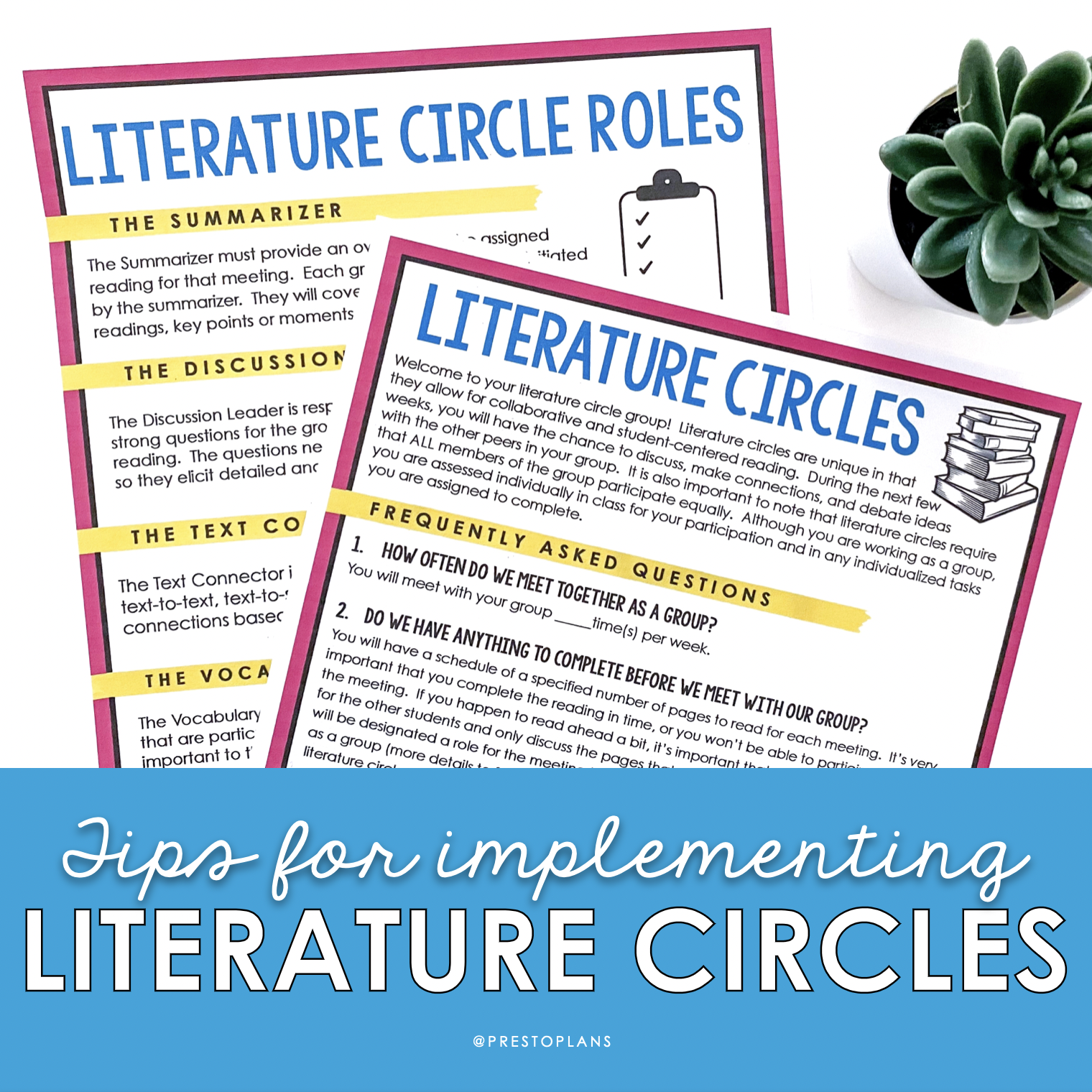
Step-by-Step Instructions For Implementing Literature Circles in ELA
Have you tried using literature circles in your ELA classroom? In literature circles, small groups of students gather together to discuss a piece of literature in depth. These are an excellent way to guide students to a deeper engagement with what they are reading through assignments and structured discussion.
If you’ve tried literature circles (or book clubs) in your ELA classroom before, you might have noticed that they require you, as the teacher, to relinquish some control by putting the onus on the students themselves. As a result, literature circles don’t always go off without a hitch.
For instance, you might have students who show up having not read the material or who simply put their heads on their desks the entire meeting. What I have learned is that if you set students up for success before even diving in, they can run relatively smoothly and the benefits far outweigh the potential challenges.
Literature circles are a great tool for any ELA classroom, and I’m excited to share my step-by-step approach to implementing (and making the most out of) them in the classroom.
1. Know Your Purpose
Before you begin implementing literature circles in your ELA classroom, it is important that you know what your purpose is. Are you going to be holding students accountable to their literature circles by grading their performances? Or are you doing literature circles for a different reason? Maybe you just want your students to simply have fun reading and discussing literature—this is an entirely valid approach!
Regardless of your purpose, it is important that it is well-established at the outset. If you want your book club meetings to be somewhat unstructured, however, you will likely want to leave out some of the following steps. I happen to love structure, as I find it does tend to keep things on track more easily. That doesn’t mean you have to approach literature circles the same way I do in your ELA classroom, of course. Do what works best for you and your students!
2. Choose the Novel Options
Once your purpose is established, you can start to choose novel options for your literature circles. There are a couple of different ways that you can do this, depending on what’s accessible to you. For example, you can take student suggestions for what to include as options, or you can see what’s popular in your school library. I always love leaning on the expert in the school: the librarian. They have an inside scoop into what has been flying off the shelves. Finding books that students won’t want to put down is the goal here.
Another approach is choosing novels that are connected to each other in some way. You can make it so all book options are of the same genre and have a dystopian novels book club, for example. Or you make it so that all of the book choices have similar topics. I’ve seen teachers do Holocaust-themed literature circles using books like Night, The Boy in Striped Pyjamas, Prisoner B-3087, etc. This can lead to more full-class activities where students can connect their novels together thematically.
3. Book Talk & Student Choices
Once you have your novel options finalized, it’s time for you, the teacher, to give book talks on each of the options. This is where you will give your students a brief summary of each of the novels. Try to sell the books with persuasive language and “teasing” the plot points that may interest them the most. If you haven’t read the books, that’s no problem! Simply read the blurbs, do a bit of research online, and share a recap of what you know about the novel. After you finish presenting each option, give everyone a chance to look through their choices before writing down their top three. Although you likely won’t be able to give everyone their first pick, I really like to make an effort to group students according to one of their three choices where possible.
4. Grouping Students
On that note, once you have collected your students’ novel choice cards and it’s time to group them accordingly, there are a few things you will want to keep in mind. When it comes to literature circles, I actually tend to allow students to be grouped with their friends. I know what you are thinking. “They won’t pay attention. They’ll just goof off. etc.” However, would you want to join a book club and share your thoughts and feelings with a group of people you don’t know at all? The reason I don’t resist this in literature circles is that we want the students to really enjoy this experience of discussing literature together and feeling the confidence and comfort to share.
I also am not a supporter of grouping students according to level. For example, you might be inclined to put some of your more reluctant students together in one group in anticipation of how their lack of engagement might impact an otherwise lively discussion. In my experience, this tends to be an unfounded fear, and in fact, it often leads to disaster. Students are keenly aware of group choices made by teachers. Being put in a group based on level (or even behavior) might be to the detriment of their confidence and their work ethic.
I am a believer in putting choice ahead of a student’s skill, so long as the novel is relatively accessible to them. Otherwise, students in less-engaged groups recognize that they have been put together for a reason. They become even more reluctant to engage as a result.
5. Literature Circle Binders
Next, I give each group their own binder that includes everything they need for their literature circles to function smoothly. For example, in mine, I like to include a student FAQ page. In this, I anticipate and answers common questions like “How often do we meet together as a group?” and “What do we talk about when are together?”
I also like to include things like their reading and meeting schedule, the list of the five student roles, assignment sheets for each role, peer assessment sheets, their final projects, and more. I will go over each of these in more detail in the paragraphs below, but remember, your students will be taking the lead on these. The goal with these binders is to help them do just that, and it will leave you not having to be distributing and organizing during the process. Doing the work ahead of time will be invaluable to you as things get going.
6. Reading Schedules
Reading schedules should include the date of each meeting as well as the corresponding page numbers that must be read ahead of time. Instead of setting the reading schedules yourself, have your students make up their own reading schedules together as a group. For example, if I tell students that all groups will be doing six book club meetings, I expect them to break their respective books into six sections themselves.
After dividing the sections, I get students to write down a copy of these page divisions in their own notebooks. This way, everyone knows what they are responsible for ahead of each meeting—even without constant access to the group’s binder.
7. Assigning Roles
In each literature circles binder, I like to provide a list of roles that have corresponding responsibilities. Students will rotate through these roles and have an opportunity to complete all of the corresponding assignments at least once. Here are the five different roles I assign:
- The Summarizer – The summarizer summarizes the main events of the assigned reading for that meeting. They pull out key points or moments and track the action of the plot.
- The Discussion Leader – The student in this role develops strong questions that are thought-provoking and elicit detailed and lengthy discussions.
- The Text Connector – This person is responsible for making text-to-text, self, and world connections.
- The Vocabulary Leader – The vocabulary leader finds and defines words that are particularly challenging.
- The Literary Leader – This student is responsible for choosing passages to discuss. These should cover the author’s development of story elements like setting, plot, conflict, or characterization.
Although you don’t have to assign roles, I find that doing so helps keep students organized and accountable.
8. The Meeting Process
In addition to assigning roles, I also provide students with a checklist that guides them through the process of each meeting. If you provide a checklist of what should be covered in each meeting, they will naturally go through the readings more slowly—and in more depth.
Again, you might not find this step necessary if you want your literature circles to be more free-flowing and less structured. In any case, here are a few examples of what you might include on your checklist if you do decide to go this route:
- The Summarizer shares an overview of assigned reading covering key points, moments, and actions.
- Using a different colored pen, add in any information the rest of the group feels was left out of the summary that should be included.
- The Vocabulary Leader goes over pertinent, confusing, or interesting terms from the reading and provides researched information (definitions) where appropriate. Others should take note of new words.
…and so on, until every topic of the literature circle is covered. While they are meeting, try to resist getting involved, and instead, keep track of how everyone is contributing to their group discussions. I also want students to all be actively participating in the discussion. I tell them they must at least speak 5 times each during the meeting. Some students will far exceed that, but it gives a baseline for those students who are more likely to sit back to step up to contribute to the discussion.
9. Peer Assessment
On a similar note, an effective way to keep track of your students’ performances with these is to get everyone to do anonymous peer assessments. On your literature circle peer assessments, you can include a space for students to write the names of everyone in their group and the questions “Reading completed?” “Task completed?” with “Yes / No / Some” checkboxes beside each one.
This might seem to be a bit of a “tattle-tale” scenario, but what I have found is that the students that did the work naturally get annoyed by the other students who did not. They will likely feel it is unfair that they may be the one doing all the work without the teacher knowing. This short (anonymous) assessment allows me to get a quick snapshot of who is participating. Will students cover for their friends and check yes when an answer is no? Of course! But this simply affords an open communication line between the teacher and group members where students can voice their concerns.
Since it’s anonymous, you can easily keep track of who or who did not do the reading or the assignment without interfering with the dynamic. If a student is unprepared for, say, 3 meetings in a row, then I simply remove them from their group. They will have to read on their own from now on.
10. Final Projects
After each of the meetings is finished and students have successfully completed the literature circles, I end with a final project that allows students to interact with the novel in a fun and creative way. For example, you might get students to write and record an original song about the novel, make a board game for it (i.e. crossword puzzle, quiz, etc.), or write an alternative ending for the story! I like to give students a list of final project ideas from which they can choose, and I even allow them to suggest their own options.
There you have it! I hope this makes implementing literature circles in your classroom fun and easy. Ready to give literature circles a try in your ELA classroom? You can grab a ready-to-print resource with everything you need to implement classroom book clubs by clicking the image below. You can also explore more tips and resources for reading instruction by clicking here.
Search the blog for what you are teaching
GIVEAWAYS
sent straight to your inbox!
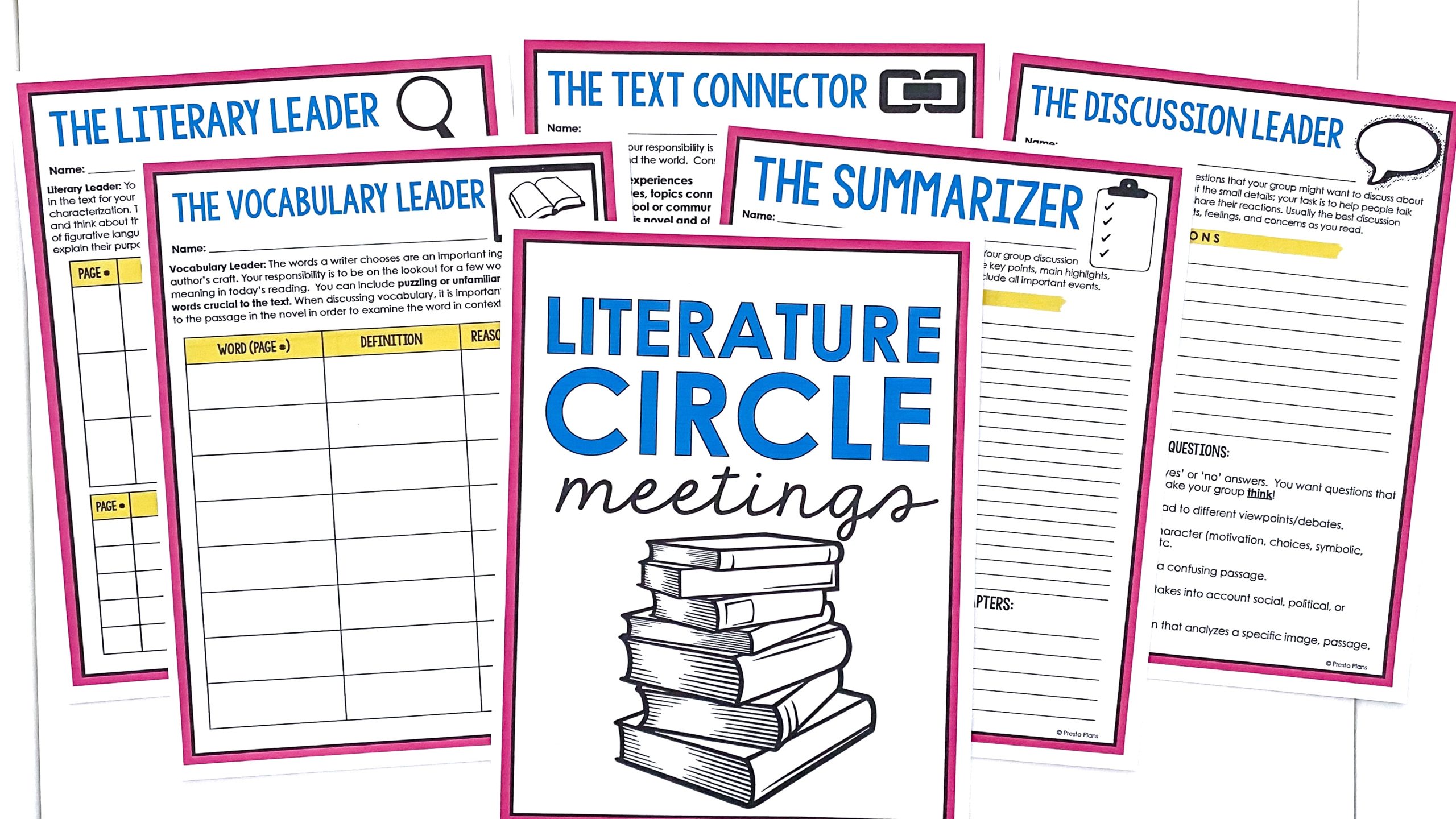
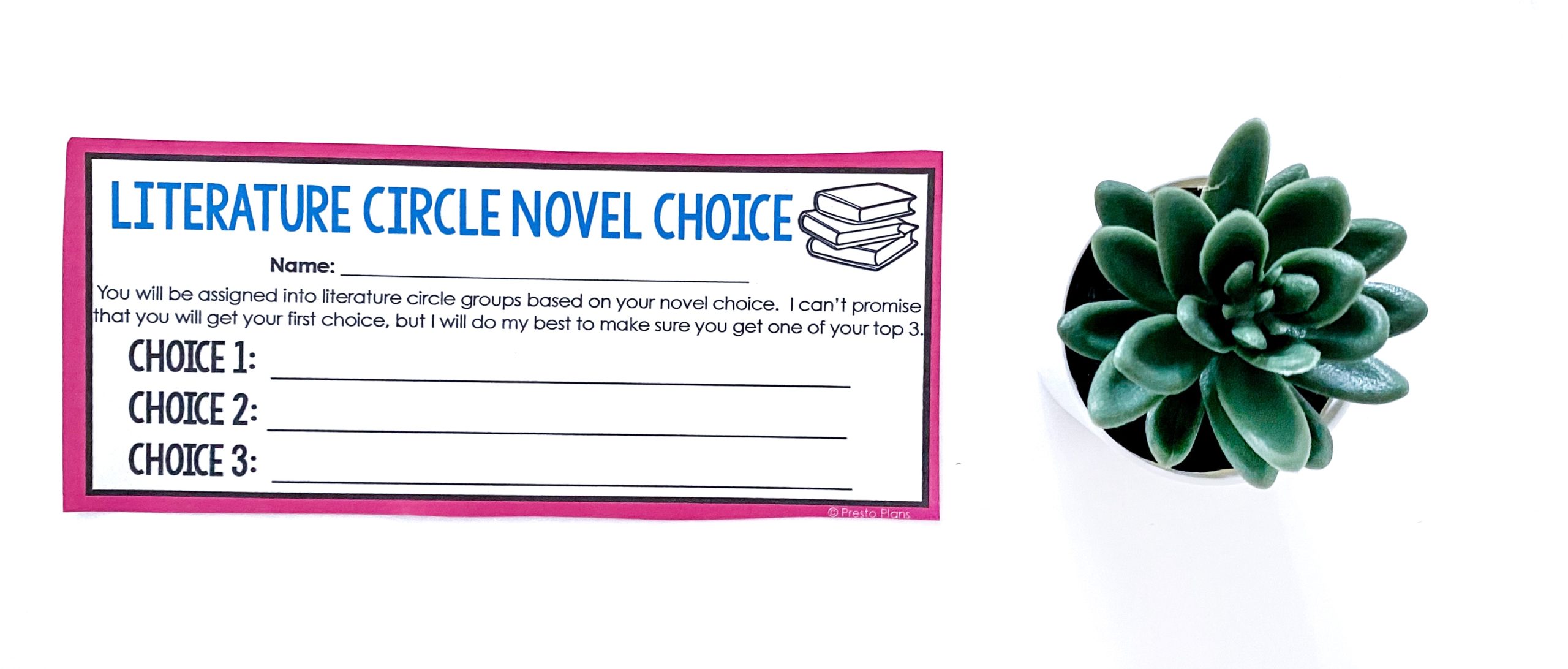
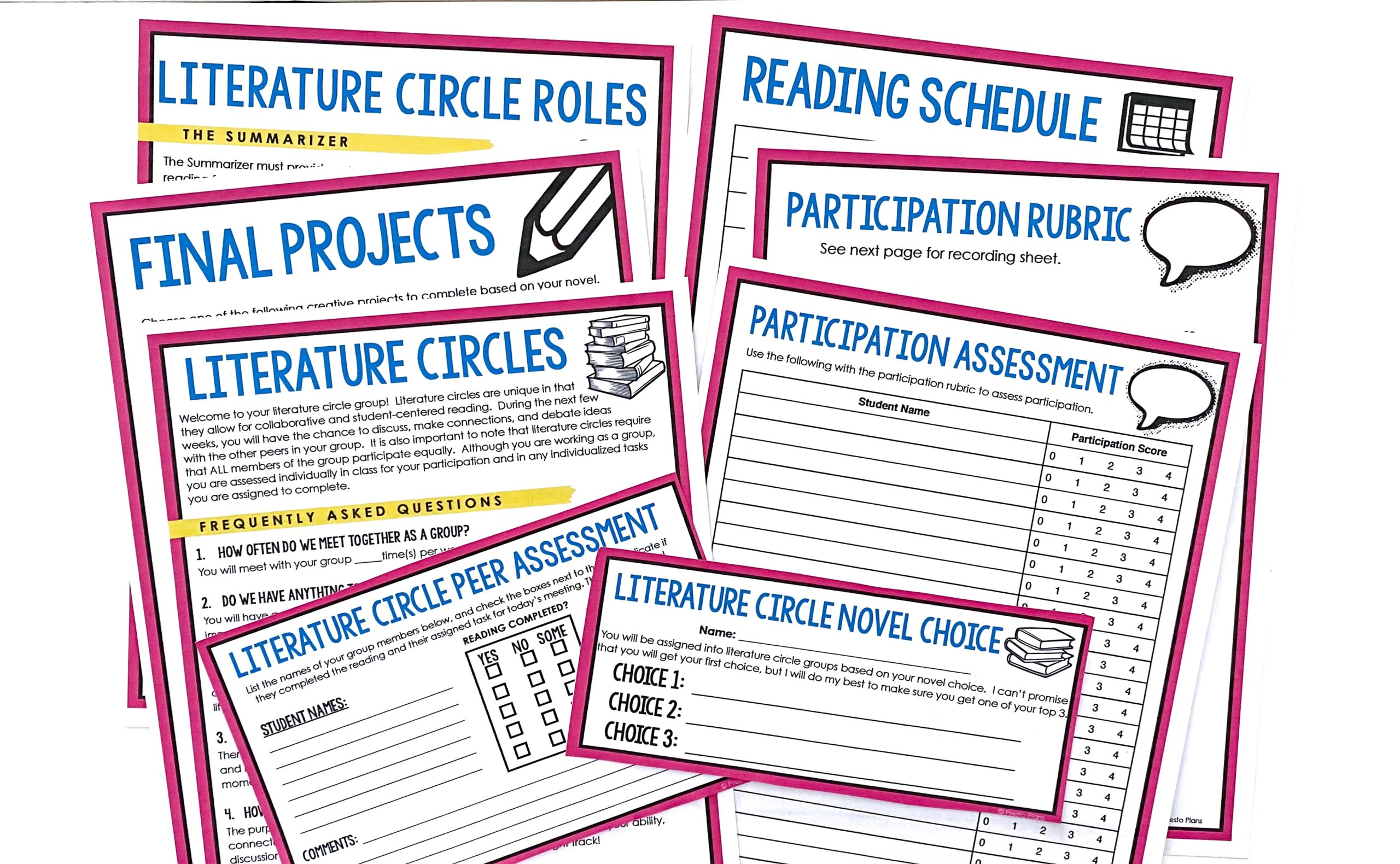
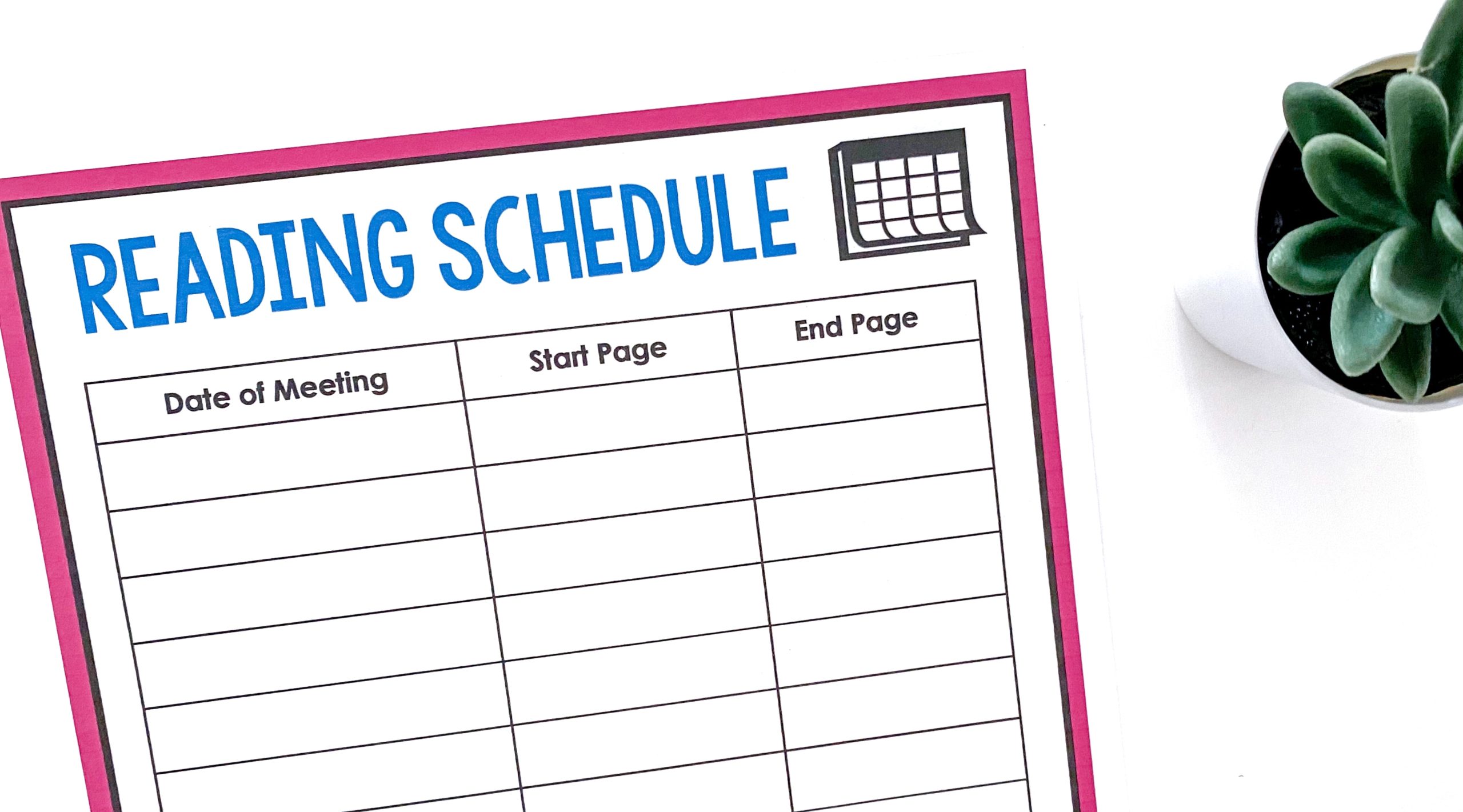
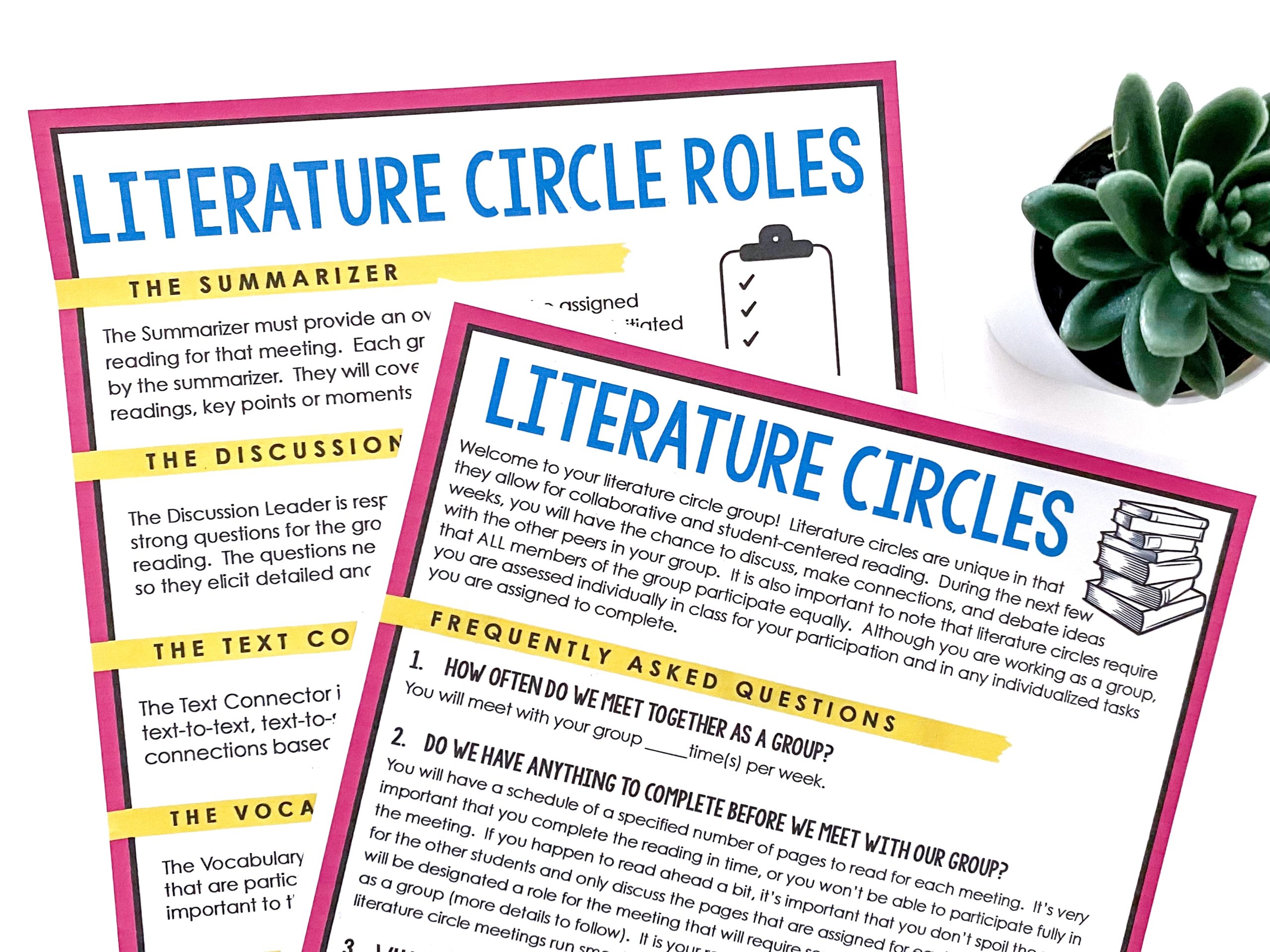
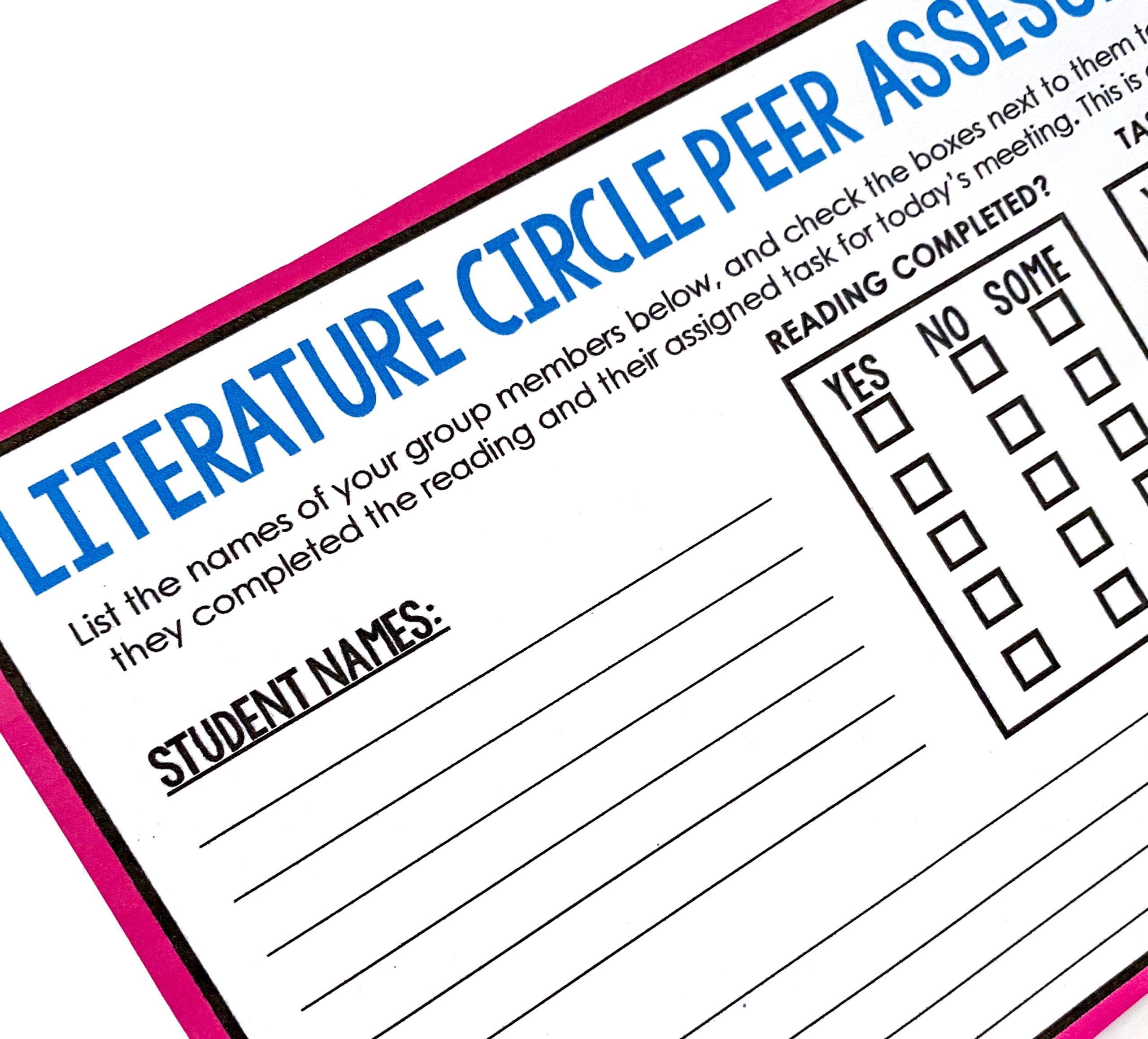
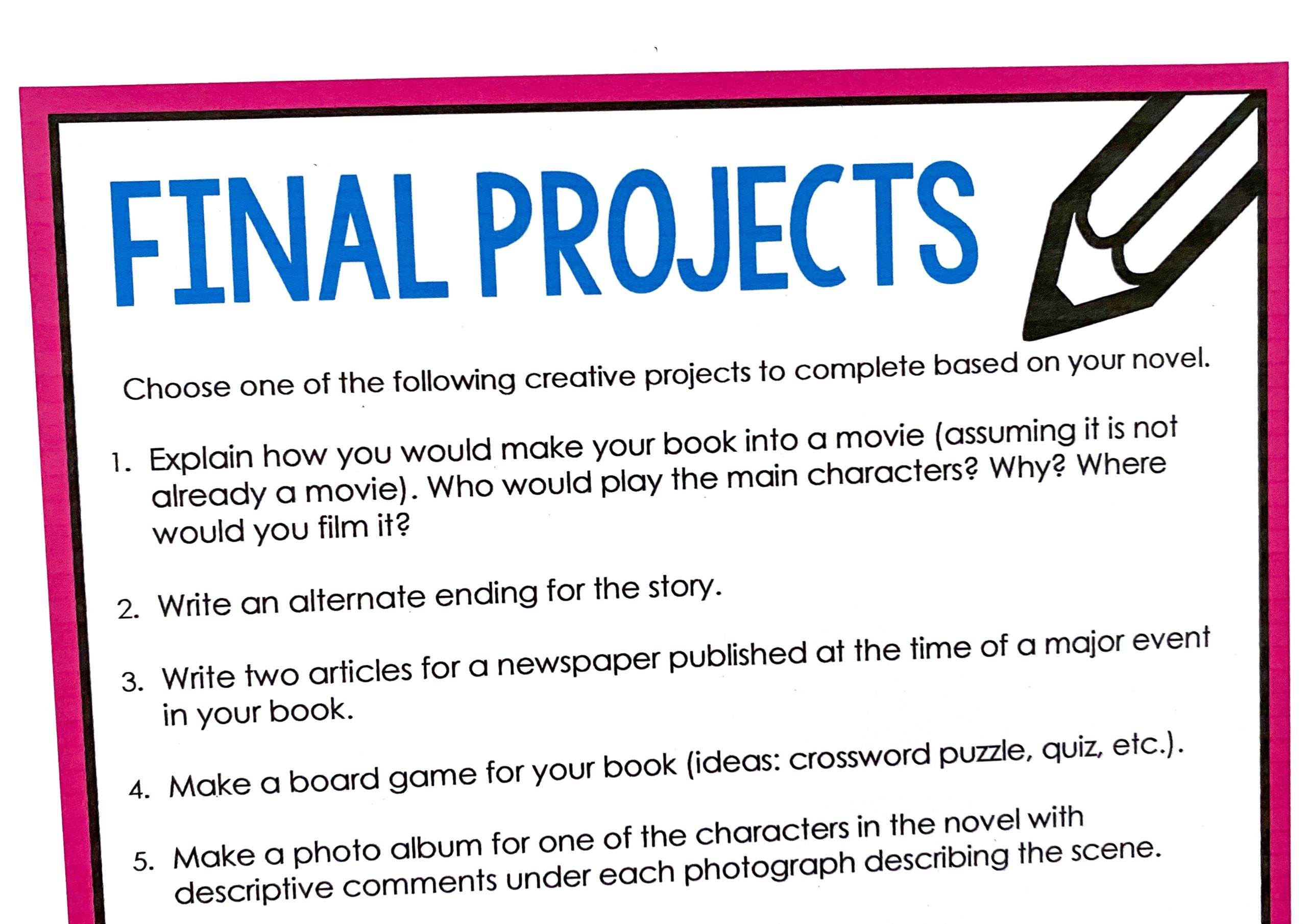
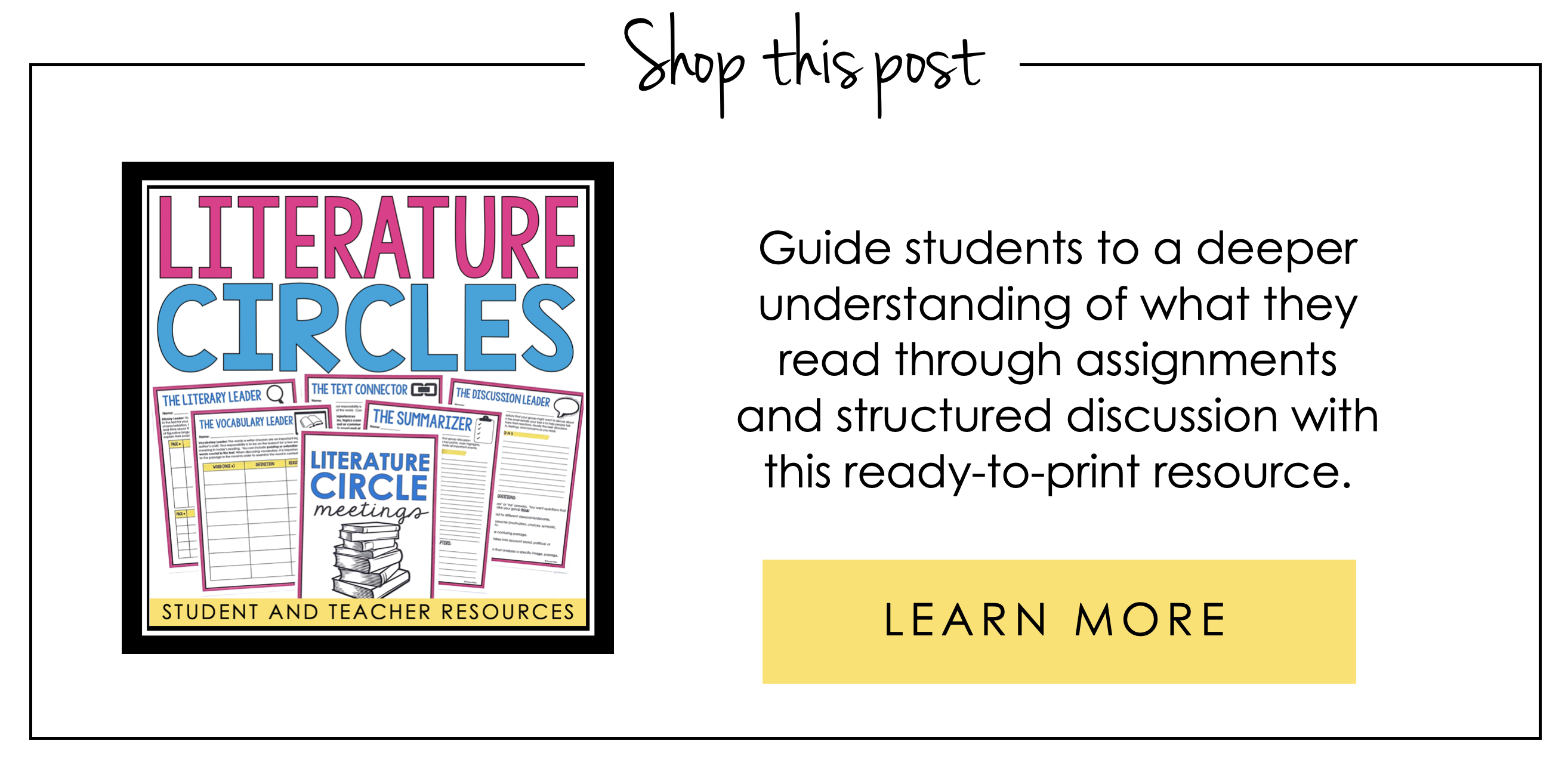
share this post